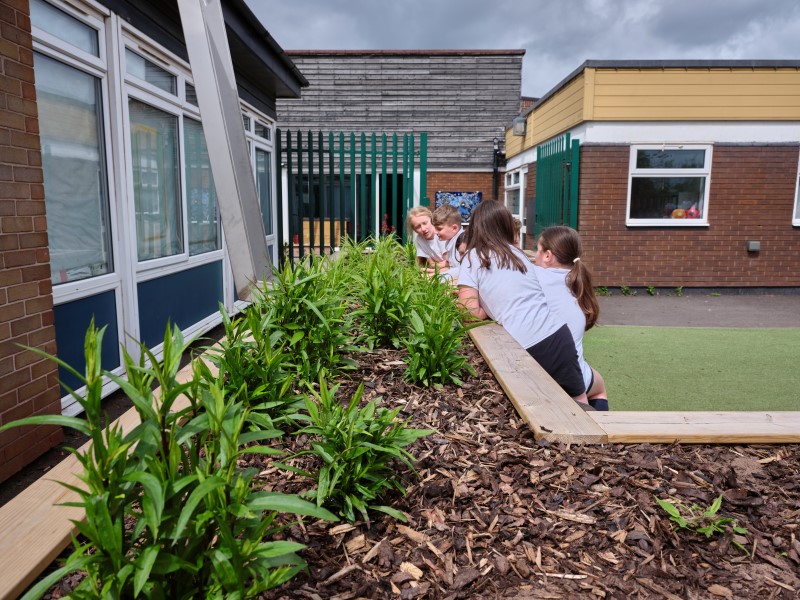31 Oct 2023
Protecting Windermere’s waterways, come rain or shine

It might feel like it rains a lot in the North West. And you’d be right, it does. But where does all the rainfall go?
We have announced accelerated investment across the region to capture this precious resource Oliver Blakemore, Senior Project Engineering Manager, explains where the money’s going, the innovations being delivered in the Windermere area to help improve rivers and how you can find out more.
Tell us about your plans for Windermere?
We’re accelerating £19 million of investment to bring forward activity right now to help reduce storm water spills at Windermere.
It’s the first instalment of a wider plan to upgrade four sites around the lake by 2030.
What will your plans involve?
We’re in the very early stages of our plans and we’re exploring various ways we can do this from building new storage tanks to hold more water which is a more traditional approach, to embedding natural solutions to slow or prevent the run-off of rainwater into our sewers. A major challenge is managing the rainfall so it doesn’t overwhelm the system so we’re looking at new and innovative ways of rainwater management for the best outcome for our waterways and their surroundings.
We’ve already started to design 4 projects local to Lake Windermere. We’re in the early stages of developing our plans which we’re looking forward to sharing with residents at our public drop-in events taking place this November.
We hear you talk about natural solutions – how do these work and what will they look like?
We use natural solutions in relation to our Better Rivers, Better North West programme predominantly to try and hold back rainwater in the catchment so that it doesn't enter into the sewer system. By not entering into the system, it creates more capacity to hold wastewater from homes and businesses.
We are using sustainable drainage systems like permeable paving. This allows the rainwater to slowly make its way into the ground, rather than hit what would typically be an impermeable surface leading to run off into the gullies and ultimately down to overflows, if it’s part of a combined sewer system.
We’re also working on solutions such as swales and attenuation basins which again hold water during storm events and reduce runoff which controls the pressure on the sewage network. Once a storm has subsided, the water will then pass to the treatment works. We will be looking to build on existing relationships with the local council and third party organisations to ensure these solutions are implemented.
Our relationships with the community are also key. We’re looking to form partnerships with schools and businesses to help them implement local level water management systems such as water butts and planters which allows them to reuse water for activities like gardening.
What makes Windermere so challenging?
The Lake District is a national park and Windermere within the Area of Outstanding Natural Beauty so we are very conscious of delivering solutions that minimise any disruption to wildlife, flora and fauna. This is one of the reasons why we prefer blue-green infrastructure and nature-based solutions. Putting the improvements we need in place will require quite large working areas, often within land we don’t own, so we need to work very closely with landowners and communities, allowing them to be a part of meeting the challenge - making the important change we all want to see.
We will need to build more water storage capacity so will install new tanks which we’ll look to bury to minimise the visual impact. This creates a separate issue as the ground, particularly around Langdale, as the village has really high rock levels so that makes these excavations more difficult
Essentially, the more blue-green infrastructure we can deliver the better – and we’ll keep working with our third party partners to do so – but where storage tanks and enhancements to the sewage network are necessary, we’ll deliver them with as minimal disruption as we can.
This sounds great, but what can be done now?
There’s lots we’re already doing to reduce spills to Windermere. We’re implementing quick solutions, for example bringing old assets back into action to hold some storm water temporarily.
We've recognised a lot of the delivery time frames for the projects are in a few years’ time and while we're trying to bring the dates for a lot of that work earlier, by its very nature the planning, design and construction process takes time. To fill that gap. we've got a task force of people looking at temporary solutions to try and prevent spills.
Where we can, we’ve made use of existing assets. We've looking at using abandoned tanks in a project at Ambleside that's pretty much near completion now. It’s already been up and running and we've seen some reduction in spill volume because of that, which is really positive and shows that the solution is working.
Where can we find out more?
We’ll be hosting some sessions in November across the region. You’ll be able to hear more about our fast-tracked investment worth £19 million to help reduce storm water spills around Windermere, and how we can work together to manage excess surface water and rainfall thanks to nature-based solutions. Drop in any time from 2pm-7pm.
- Monday, 20 November, Hawkshead Market Hall, Hawkshead
- Tuesday, 21 November, Marchesi Centre in Winderemere
- Wednesday, 22 November, Ambleside Parish Centre, Ambleside
Our United Utilities Information Centre is also open at 8 Crescent Road, Windermere, LA23 1EA just opposite the Post Office.